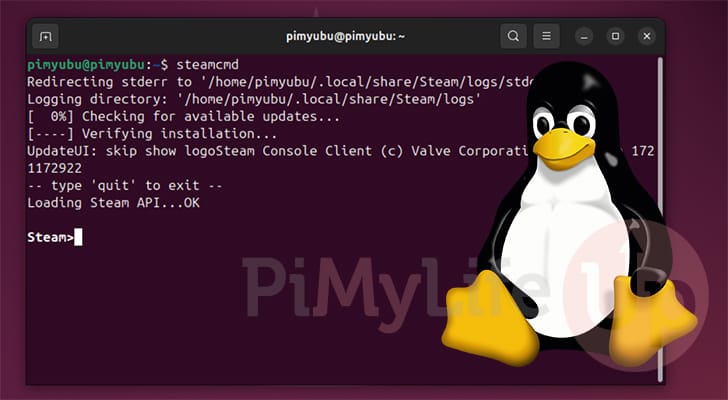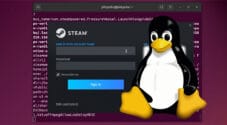In this quick guide we will be showing you how to install SteamCMD on Linux.

SteamCMD is the command line tool for the popular Steam client. Using this tool, you can perform many of the actions you would through the desktop interface using the terminal.
The most useful use case of SteamCMD is setting up dedicated game servers. This tool can easily download the server to your machine and then keep it up to date.
You can even use this tool to install any games you own without going through the desktop Steam client. For example, if you want to set up a Linux device with certain games automatically, this tool becomes incredibly useful.
The following steps have been written with a focus on Debian based operating systems such as Ubuntu, but they should work on others with slight changes.
Quick and Easy Steps to Install SteamCMD on Linux
In the following sections, we will walk you through installing the SteamCMD client on your Linux system.
This command-line tool is available through most Debian system repositories, so installing it and keeping it updated is simple.
Preparing your System for SteamCMD
1. Before you install SteamCMD on your Linux system, you should update the current system’s packages.
The first command updates the package list cache. The second command upgrades any out-of-date packages.
sudo apt update
sudo apt upgrade -yCopy2. Once your system has been updated, you must ensure that the “software-properties-common” package has been installed.
You can install this package by running the following command in the terminal.
sudo apt install software-properties-commonCopy3. After installing the “software-properties-common” package, our next step is to add the “i386” architecture to our Linux system.
The reason we must do this is that SteamCMD is a 32-bit tool and relies on 32-bit libraries to work. Luckily, adding this architecture will allow our system to install the software it requires.
sudo dpkg --add-architecture i386Copy4. The next thing we must do before installing SteamCMD on Linux is adding an additional repository. The reason for this is that SteamCMD is a proprietary, closed-source tool and isn’t included in the default repository of most operating systems.
On Ubuntu, we must add the multiverse repository by using the following command.
sudo apt-add-repository multiverseCopyOn other Debian based operating systems, you will want to add the “non-free” repository by running the command below.
sudo apt-add-repository non-freeCopyInstalling SteamCMD on Linux
5. Since we made changes to the available repositories, we will need to run an update again before the package manager is aware that it can install SteamCMD.
Perform the package list cache update by using the following command.
sudo apt updateCopy6. Finally, at this point, all you need to do to install SteamCMD to your Linux machine is to run the following command.
This will download and set up SteamCMD on your Linux machine
sudo apt install steamcmdCopyDuring the installation process, you must agree to the Steam license agreement.
Testing that SteamCMD is Successfully installed
7. You can verify that you have now successfully installed SteamCMD on Linux by running the following command
When you first run SteamCMD, it will download the Steam client and all the libraries it requires. This process can take a couple of minutes to complete.
steamcmdCopy8. Once SteamCMD finishes loading, you should see the command prompt, which looks like the following:
Steam>This indicates to you that the Steam CLI has loaded successfully, and you can now interact with Steam
9. You can quit out of this tool by simply typing in the following command.
quitCopyConclusion
At this point, you should have successfully installed SteamCMD on your Linux operating system.
This command-line tool can download and install games provided through Steam. Its most common use is for setting up a dedicated game server, but you can also use it to install games you own if you log in.
Please feel free to post a comment below if you have had any issues with getting SteamCMD installed on your system.
If you like this guide, we highly recommend you check out our many other Linux tutorials.










This tutorial is excellent, thanks so much, worked first try.
Thanks for such a detailed guide
this guide is so good that I managed to get it working on the first try Thanks for guide!